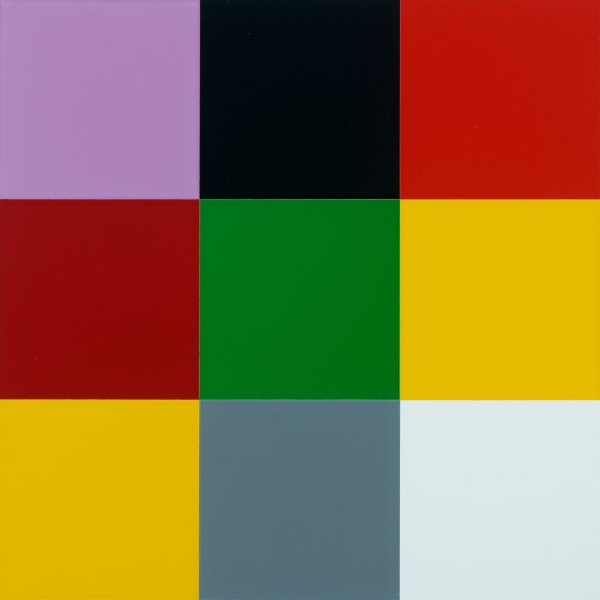GERHARD RICHTER German, b. b. 1932
"Art is the greatest expression of hope."
Gerhard Richter is a contemporary German painter considered among the most influential living artists. Richter’s experiments with abstraction and photo-based painting greatly contributed to the history of the medium. Culling from his vast image archive known as the Atlas, Richter’s paintings reference images of his daughter Betty, flickering candles, aerial photographs, portraits of criminals, and pastoral landscapes. “Pictures are the idea in visual or pictorial form,” he reflected. “And the idea has to be legible, both in the individual picture and in the collective context.” Born on February 9, 1932 in Dresden, Germany during the rise of the Nazi regime. After World War II, living in East Germany under Soviet rule, Richter learned to produce of highly realistic Socialist Realist murals. In 1961, Richter fled to West Germany, where he studied at the Kunstakademie Düsseldorf alongside Sigmar Polke. During this time, the artist first began producing blurred photo-paintings. The works explore the conflicting nature of an image’s formal make up and the content it contains. Richter introduced abstraction to his repertoire in the following decades, analyzing painterly expression through a technique of squeegeeing paint over the canvas. In 2012, Richter set a record auction price for a painting sold by a living artist, with his Abstraktes Bild (809-4) (1994) which went for $34 million. He broke this twice again, first in 2013 with Domplatz, Mailand (Cathedral square, Milan) (1968) selling for $37.1 million, then in 2015 by the sale of Abstraktes Bild (1986) for $44.52 million. The artist currently lives and works in Cologne, Germany. Today, his works are held in the collections of the Art Institute of Chicago, The Museum of Modern Art in New York, the Tate Gallery in London, and the Albertina in Vienna, among others.
-
 GERHARD RICHTERKugelobjekt I, 1970Black and white photography, wooden box, 3 glass panes, 3 steel balls of different size18 x 13 x 5 cm
GERHARD RICHTERKugelobjekt I, 1970Black and white photography, wooden box, 3 glass panes, 3 steel balls of different size18 x 13 x 5 cm
7 1/8 x 5 1/8 x 2 in -
 GERHARD RICHTERAbstraktes Bild, 1980Oil on wood40 x 60 cm
GERHARD RICHTERAbstraktes Bild, 1980Oil on wood40 x 60 cm
15 3/4 x 23 5/8 in -
 GERHARD RICHTERKerze I, 1988Offset print and chalk on paper89,3 x 94,5 cm
GERHARD RICHTERKerze I, 1988Offset print and chalk on paper89,3 x 94,5 cm
35 x 37 in -
 GERHARD RICHTERKerze II, 1989Oil on offset print on paper on plastic board91 x 91 cm
GERHARD RICHTERKerze II, 1989Oil on offset print on paper on plastic board91 x 91 cm
35 7/8 x 35 7/8 in -
 GERHARD RICHTERDomecke I, 1998Cibachrome photography between plexiglass plates78 x 55 cm
GERHARD RICHTERDomecke I, 1998Cibachrome photography between plexiglass plates78 x 55 cm
30 3/4 x 21 5/8 in -
 GERHARD RICHTER3 x 3 Farben, 2007Lacquer on wood29 x 29 cm
GERHARD RICHTER3 x 3 Farben, 2007Lacquer on wood29 x 29 cm
11 3/8 x 11 3/8 in -
 GERHARD RICHTERStudie zu Strip, 2011Digital inkjet print on paper on alu-dibond48 x 47 cm
GERHARD RICHTERStudie zu Strip, 2011Digital inkjet print on paper on alu-dibond48 x 47 cm
18 7/8 x 18 1/2 in -
 GERHARD RICHTERVorhang, 2013Digital inkjet print (pigment print), four colors on white paper, mounted between plexiglass and alu-dibond plate205,5 x 195 cm
GERHARD RICHTERVorhang, 2013Digital inkjet print (pigment print), four colors on white paper, mounted between plexiglass and alu-dibond plate205,5 x 195 cm
80 3/4 x 76 3/4 in










